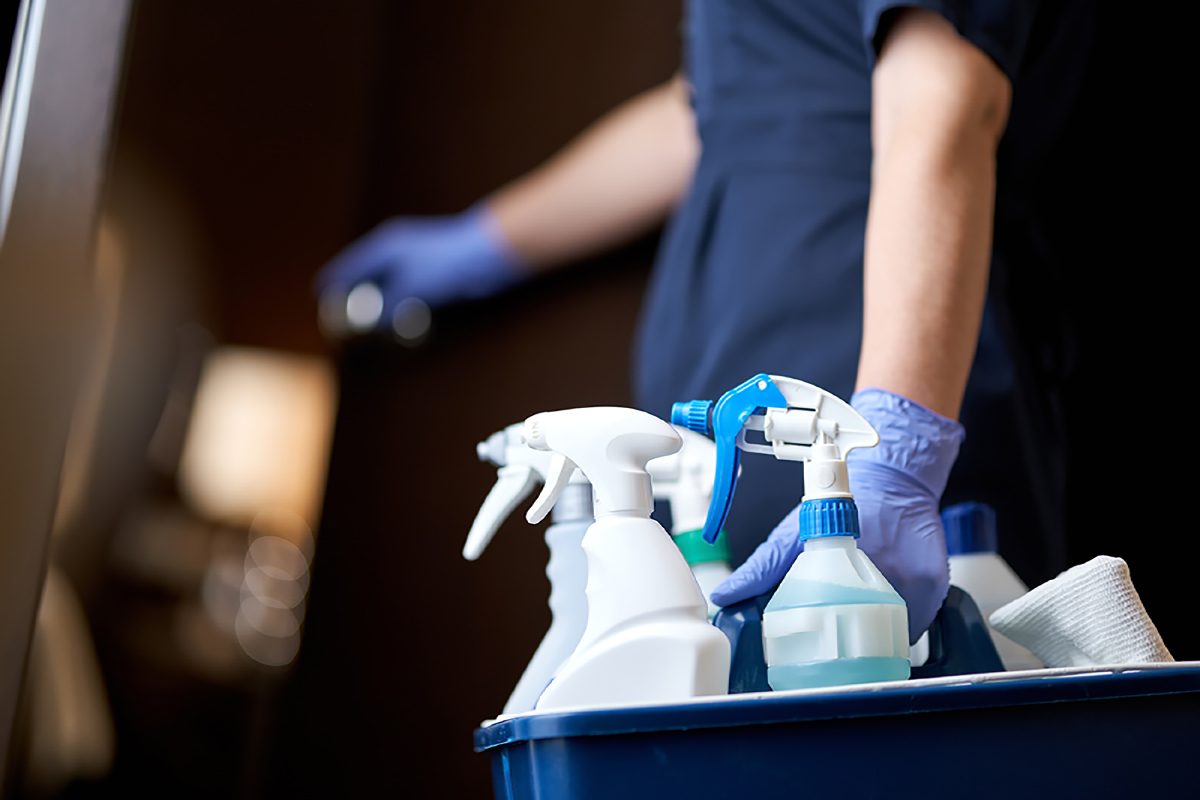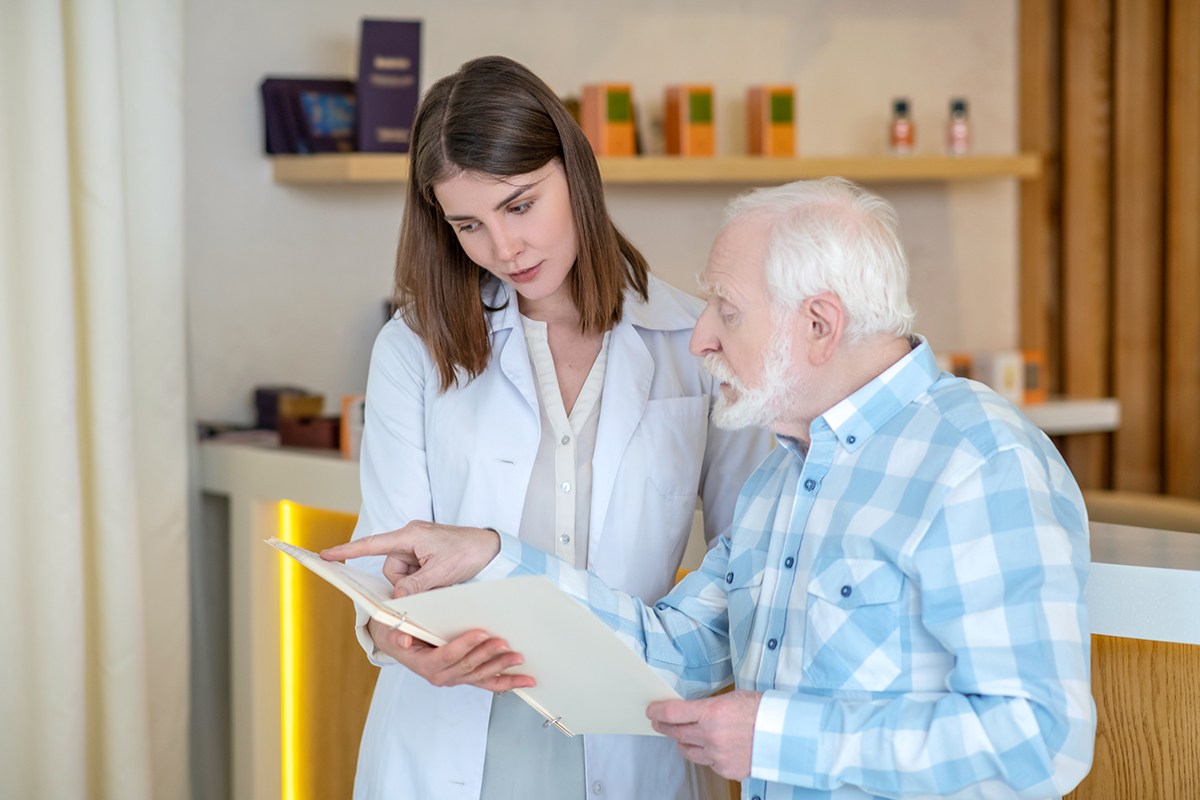In its broadest terms, reflexology is the relationship between one part of the body and another. While many traditional styles of reflexology require nothing outside of the practitioner’s hands as an instrument, many practitioners do rely upon a reflexology chart to help guide them to the correct method of application for the client’s specific complaints and overall bodily improvement. Some styles of reflexology also make use of wooden tools, oils, or lotions.
Over the course of human medicinal history, this has developed into a type of complementary and alternative medicine, otherwise referred to as a CAM, in which a systematic application of pressure to different reflex points on a body part is used to release energy, return the body to a balanced state, and treat physical and mental illnesses and pains. The most common body part on which pressure is applied is the foot, though hand reflexology and facial reflexology, including the ears, are also practiced.
The practitioners of this form of targeted massage or alternative healing are called reflexologists and the level of certification required and regulation administered in the field varies by country.
As this article will explore in more depth, reflexology is primarily founded on the theory that specific points on certain body parts are connected to organs and internal systems and thus one can positively or negatively affect the other. It is for this reason that many theories and practices surrounding reflexology focus on the acclaimed health benefits, forming one of the core reasons why reflexology has become one of the most popular massage styles.
In general, a reflexology massage should not be painful. The Western traditions of reflexology tend to avoid areas of pain or pressure, whereas many Chinese practices focus on the areas of tenderness or pain to address it directly. If the discomfort is too much, the individual patient should speak to their reflexologist to adjust the area, pressure, or movement.
Relaxation is a primary effect for many recipients of a reflexology massage and the areas of soreness that are focused on should see a decrease in tenderness as pressure is applied. Ticklishness is not a common side effect due to the firmness of the applied pressure. However, mood swings, sleepiness, and nausea have been noted as potential side effects.
Foot Reflexology Charts
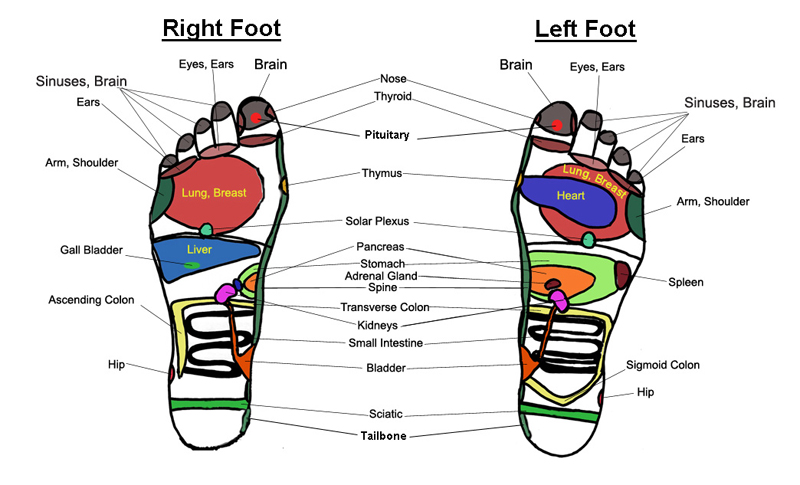

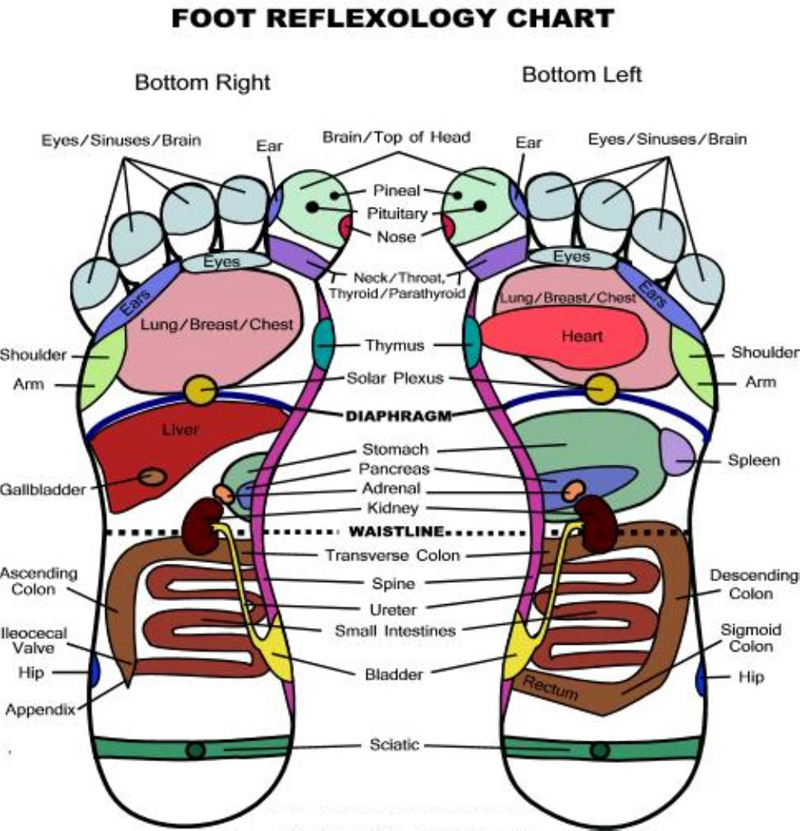
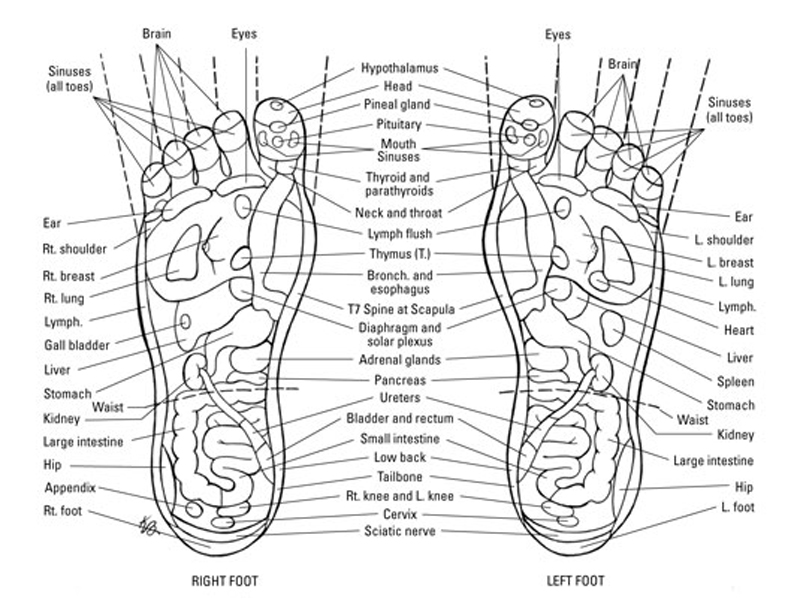





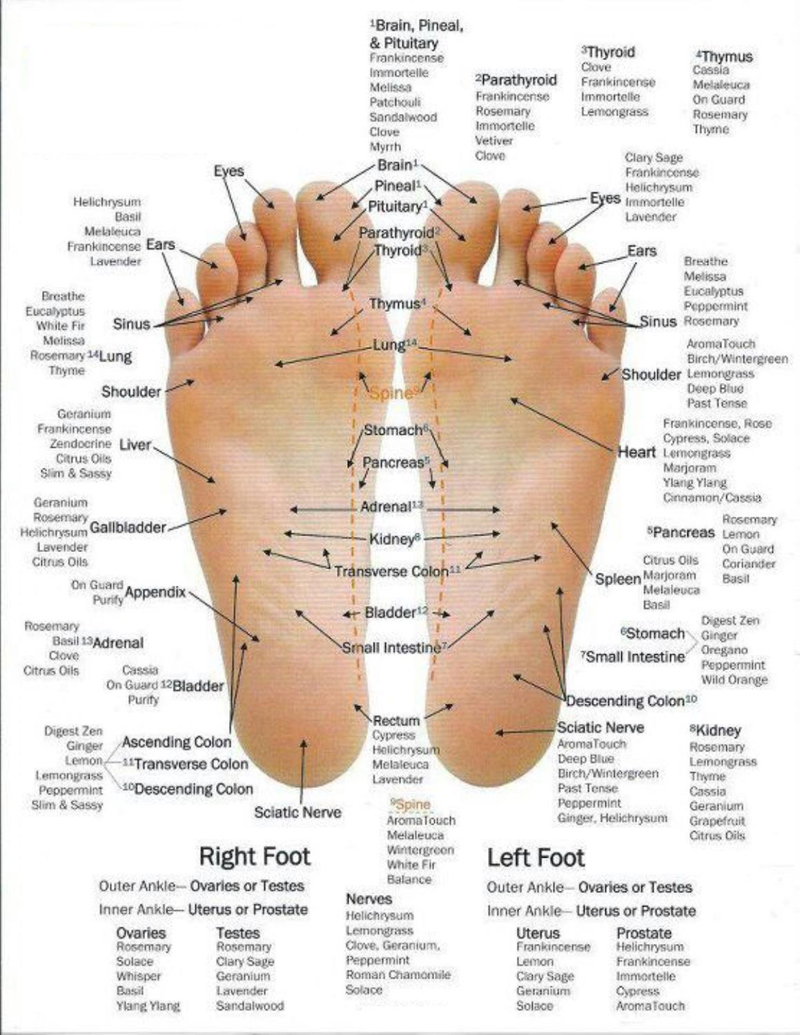

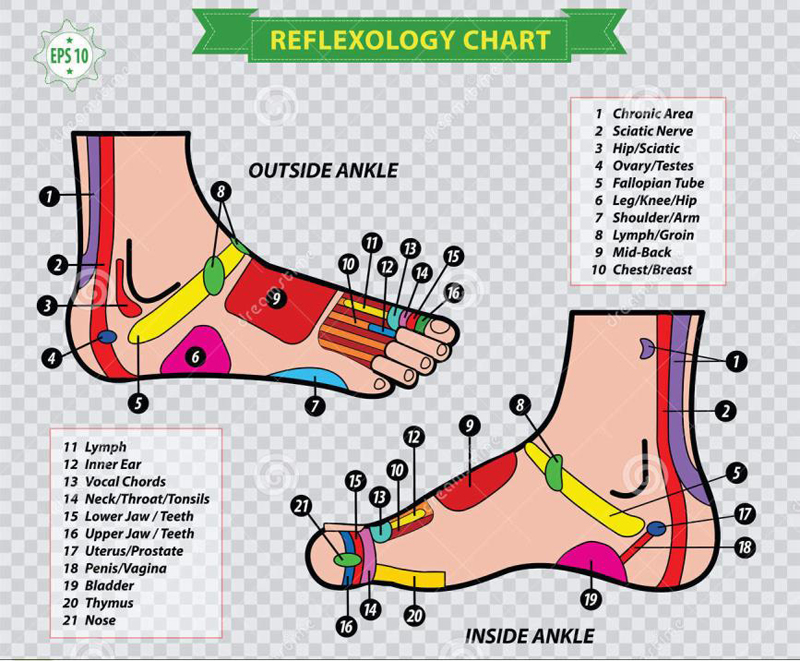

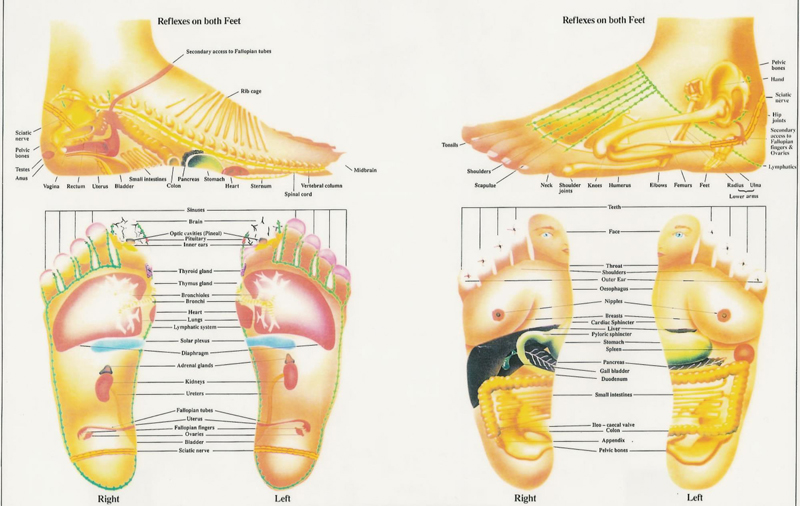






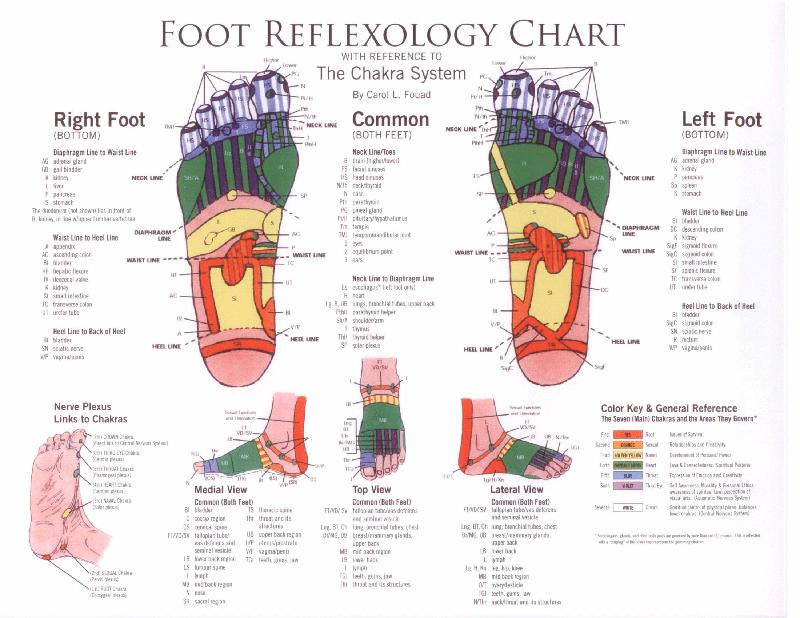


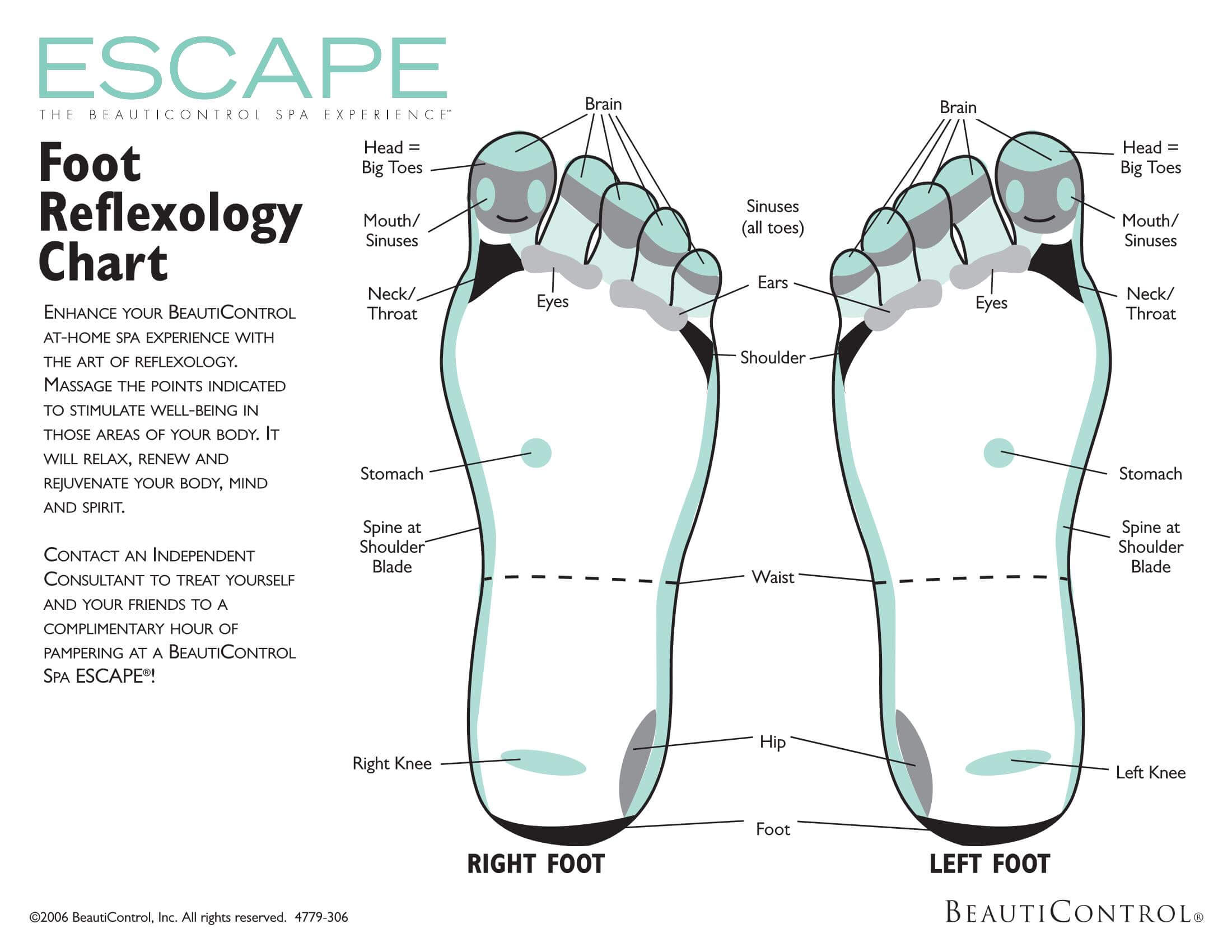




The History and Iterations of Reflexology
There is some dissent in scholarly and industry factions as to where the practices of reflexology originated. Some claim it derives from Egyptian culture circa 2330 B.C. and can be seen in a hieroglyphic depiction within a Saqqara pyramid, while others link it to ancient China within the last 5,000 years. In late 14th century Europe, Zone Therapy was being practiced, which is a common subset of reflexology.
Traditional Chinese reflexology focuses on qi. The qi is an energy that flows through a person and whose channels can be blocked, thus throwing the body out of balance. Stress is a common source of blockage in this tradition and this imbalance is blamed for a variety of illnesses.
Reflexology was the method developed in ancient China to remove these blockages and allow for the clear flow of qi.
The Meridian system is the terminology used to refer to the concept that qi flows throughout the body via paths, called meridians, and is often associated with acupuncture, another ancient Chinese practice.
note
These pathways are not physical and have not been found through scientific examination.
In the 1890s, Sir Henry Head found scientific evidence that connected areas of the spine and internal organs to sections of skin. Studies from this time found that the nervous system can react to external factors, including touch.
There are two major reflexology methods generally accepted internationally in the modern world. The Ingham Method, founded by Eunice Ingham in the late 1930s, is the primary source for modern practices today and is focused on the relaxation elements of the practice to combat tension.
In contrast, the Rwo Shur style of reflexology combines pressure and thumb sliding for a fast application to create more stimulation as opposed to relaxation. This method can be achieved through the use of your knuckles or a wooden instrument.
What is Reflexology Good for?
Science has not consistently been able to prove any significant health effects from the specific techniques of reflexology. However, there is influential anecdotal evidence attributed to the benefits of reflexology. For that reason, reflexology is often seen as a positive complementary, natural treatment alongside more traditional medicines.
This section will examine the most common benefits attributed to reflexology. The trigger point massage has been associated with increased relaxation and the opening of neural pathways, which could affect stress reduction and sleep disorders. Likewise, better brain function, reaction time, anxiety reduction, and mood improvement are seen as a result.
Turning to more physical ailments, reflexology is connected to migraine and headache relief, as well as overall pain relief such as heel pain from plantar fasciitis, and stomach and sinus issues. There are also claims that the practice revives nerve function and sensitivity and betters the circulation of oxygen and blood throughout the body.
This increased circulation can improve organ function and trigger your metabolism, which could be a cause of the raised energy levels patients claim they experience. Balance is a common theme in reflexology as well, specifically through your circadian rhythm and the encouragement of homeostasis within the body.
Other effects reflexology is used for include immune system improvement, lowered toxicity levels, recovery from colds, sinus issues, and bacterial infections, back problem recovery, hormonal balance correction, digestion improvement, and pain relief for arthritis.
It has been used to fight cancer, including the associated psychological pain and nerve problems, and numbness that is sometimes a side effect of cancer drugs, as well as boost fertility. The psychological benefits derived from the human touch and the care using reflexology chart imbued in it are often at play here.
How Does Reflexology Work?
There are several theories that attempt to explain how reflexology works and are dependent upon the field of study and reflexology you specialize in. One theory attempts to explain the process of reflexology through the mechanisms behind the interactions of the brain and nerve signals.
Pain is felt when the nerves in Body Part A signal to the brain that something is wrong. The brain, upon receiving that signal, sends the signal to feel pain back. This theory works off of the assumption that only so many signals can be transported throughout the body. Therefore, when the pressure point in the foot that is associated with Body Part A is pressed according to the reflexology chart, nerve signals are created and temporarily block the pain signals that are emitting from Body Part A.
An alternate theory says that as the muscles tense, they slow down the body’s circulation and toxic crystals are formed in the blood as a result. These crystals then travel to the feet and block other signals, leading to pain or discomfort. The pressing action of a reflexology massage, in this theory, is supposed to break up these crystals.
As discussed earlier, reflexology in Chinese medicine believes that qi can be blocked, often by stress, and that by following a reflexology chart, you can apply pressure to the foot, or other body parts, until the energy reaches the area which is blocked.
The Zone theory or Reflex Zone Theory is another version of this mapping. In this theory, the body is sectioned into ten vertical or longitudinal zones, five on each side of the body. These zones follow down each respective arm, as well as down the body and then down each respective leg, lining up with a toe.
Some scientific theories believe reflexology works due to the effect touch can have on the central nervous system, the general benefits of massage and relaxation, and the manipulation of nerve endings from the periphery to the central nervous system to increase the flow of blood and nutrients and to send an impulse to where the body is holding tension. Common touches that you come across in reflexology include kneading, pulling, tracing, and arch work.
Reflexology vs. foot massage
Reflexology is a specific type of foot massage which has a different style, technique, and intention. A foot massage is the simple manipulation of tissue and muscle. The manipulation is focused only on the foot itself, rather than the effect on other organs or parts of the body, and often has the intention of relaxation and tension relief in the foot itself.
In contrast, reflexology uses firm, specific pressure on intentional points of the body for the increase of energy flow to other body parts. The touch used during a reflexology session will differ from a traditional foot massage, specifically in the intensity and depth of the pressure and the hand movements.
What does Modern Research say About Reflexology?
There are not many scientific studies on reflexology and many of the studies that have been done, specifically with positive results, have not been replicated. This lowers their reliability as a verifiable source. Most studies, especially reviews of studies, conclude that there is little to no scientific proof that corroborates anecdotal claims of specific health benefits.
In a 2008 study reviewing five other qualified studies on the subject, only one showed a statistically significant effect of reflexology as a treatment. This was in the case of urinary symptoms associated with multiple sclerosis.
A 2000 and a 2014 study on the effect of reflexology on anxiety for patients with breast or lung cancer and heart surgery respectively both conclude there is a significant reported reduction in anxiety. It must be noted, however, that both of the studies use patients for whom this is a complementary therapy to traditional medicine and treatment plans.
Safety and Contradictions
As with any therapy or treatment, it is important to be aware of any safety concerns or conditions that might be associated with reflexology. While these are not definitively prohibitive of participation in reflexology practice, you should speak to a doctor prior to participation if they suffer from the following: foot-based circulation issues, blood clots in the leg veins, gout, fungal infections, foot ulcers, epilepsy, blood disorders, low platelet count, thyroid issues, or any open wounds on the areas to be massaged. While many people undergo a reflexology massage without any negative side effects, tenderness in the area massaged, lightheadedness, and heightened emotional sensitivity might occur.
It is imperative that a reflexologist know if you are pregnant prior to the session. There is a risk that certain pressure points in the hands and feet can induce contractions. A baby’s likelihood of optimal health is highest at 40 weeks and there is a risk of premature labor that is run by taking part in a reflexology massage. While reflexology can be used to induce labor, it must only be done so with a doctor’s approval.
What is Facial Reflexology?
While foot reflexology is the most common form of reflexology, other areas of the body can be used to a similar effect. Facial reflexology uses reflex points and zones to massage the face and scalp, stimulating the brain. Fingertips are used to apply pressure to certain areas which correspond to other parts of your anatomy. Facial reflexology has three common reflexology points which are incorporated into the session: the Taiyang or the temples, the Bitong or the nostril at the nasolabial groove, and the Yin tang, the center of the forehead, also referred to as the “third eye”.
There are physical, mental, and aesthetic benefits associated with facial reflexology. As with many massages, it can be used to reduce stress and tension, as well as improve sleep, energy, the immune system, mood, and pain. Sinuses and headaches are specifically noted as areas of relief. Aesthetically, the massage increases blood and oxygen flow to the face and can lead to tighter and plumper skin.
Important Information for a Reflexology Session
- The practitioner should be a valuable source of information on the best pre and post-care practices. A certified practitioner should be up to date on this information.
- It is not advised to eat directly after the massage, but you should drink water soon after to rehydrate and encourage the elimination of toxins and lactic acid buildup.
- A doctor should be consulted prior to the massage if you have any conditions that affect the feet or legs or have particular issues with clots, inflamed veins, or blood diseases. If you are pregnant, it is best to avoid a reflexology massage unless approved by a doctor’s care.
- Speak up about any pain or issues you are having both before and during the massage. The practitioner can adjust their technique to suit your needs.
- Most massages are thirty, sixty, or ninety minutes. The most common duration of a massage is 30 minutes, though style and health conditions can affect this.
- Like many new practices, consistency and repetition are important in the beginning. For those new to the practice, it is often recommended to schedule a treatment every week for four to six weeks. Afterward, a biweekly or even monthly schedule is usually sufficient for maintenance.
Frequently Asked Questions
Most massages are thirty, sixty, or ninety minutes long. The most common time for a massage is 30 minutes, though the style of reflexology and health conditions can affect this.
Like many new practices, consistency and repetition are important in the beginning. For those new to the practice, it is often recommended to have a session every week for four to six weeks. Afterward, a biweekly or even monthly schedule is usually sufficient for maintenance.
This application should never be painful or exceed your comfort level. However, different styles approach the release and focus of pain points differently. Often, Western styles focus on easing the pressure, whereas Chinese techniques address the tender points head-on.



